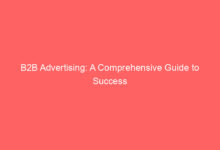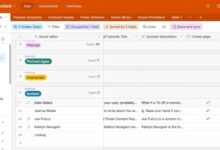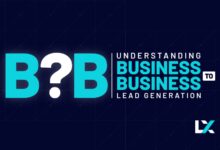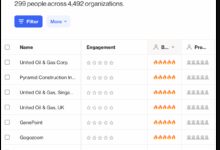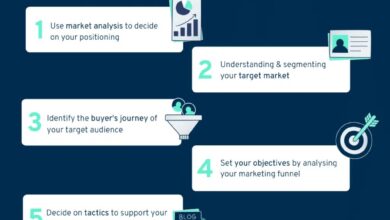B2B Marketing Automation: 7 Powerful Strategies to Skyrocket Growth
In today’s fast-paced digital landscape, b2b marketing automation isn’t just a luxury—it’s a necessity. Smart businesses are leveraging automation to streamline outreach, boost conversions, and scale efficiently. Let’s dive into how you can transform your B2B marketing game.
1. Understanding B2B Marketing Automation: The Core Concept

B2B marketing automation refers to the use of software and technology to automate repetitive marketing tasks, manage complex customer journeys, and nurture leads across long sales cycles. Unlike B2C, where decisions are often emotional and quick, B2B purchasing involves multiple stakeholders, longer timelines, and data-driven decisions. Automation helps marketers stay organized, relevant, and efficient throughout this intricate process.
What Sets B2B Apart from B2C Automation?
The fundamental difference lies in the buyer journey. In B2C, a customer might see an ad and buy within minutes. In B2B, a single deal can take months or even years to close. This complexity demands a more strategic, multi-touch approach.
- B2B sales cycles are longer and involve multiple decision-makers.
- Content must be highly educational, data-backed, and tailored to various roles (e.g., CFO vs. CTO).
- Lead scoring and segmentation are critical to prioritize high-value prospects.
“Marketing automation allows B2B companies to deliver the right message, to the right person, at the right time—without manual intervention.” — HubSpot
Key Components of B2B Marketing Automation
A successful b2b marketing automation strategy integrates several core components that work in harmony to nurture leads and support sales alignment.
- Email Campaigns: Automated drip sequences based on behavior or stage in the funnel.
- Lead Scoring: Assigning values to leads based on engagement and demographic fit.
- CRM Integration: Syncing marketing data with sales platforms like Salesforce or HubSpot.
- Behavioral Tracking: Monitoring website visits, content downloads, and email opens.
- Multi-Channel Nurturing: Combining email, social, retargeting ads, and webinars.
These tools allow marketers to create personalized experiences at scale, ensuring no lead falls through the cracks.
2. The Evolution of B2B Marketing Automation: From Basic Emails to AI-Driven Insights
B2B marketing automation has come a long way since its early days of simple email blasts. Today, it’s a sophisticated ecosystem powered by artificial intelligence, predictive analytics, and deep integration with sales and customer service platforms.
From Manual Campaigns to Intelligent Systems
In the early 2000s, automation tools were limited to scheduling emails and tracking basic open rates. Marketers had to manually segment lists and design campaigns. Fast forward to today, and platforms like Marketo and HubSpot use machine learning to predict lead behavior, recommend content, and optimize send times.
- Early automation: Batch-and-blast emails with minimal personalization.
- Mid-2010s: Introduction of lead scoring and CRM sync.
- Present day: AI-powered recommendations, chatbots, and predictive lead routing.
The Role of AI and Predictive Analytics
Modern b2b marketing automation platforms now leverage AI to analyze vast datasets and forecast which leads are most likely to convert. For example, Salesforce Marketing Cloud uses Einstein AI to score leads, suggest optimal follow-up times, and even draft email content.
- Predictive lead scoring improves conversion rates by focusing efforts on high-intent prospects.
- Natural language processing (NLP) helps personalize subject lines and CTAs.
- AI-driven A/B testing automates campaign optimization.
This shift from reactive to proactive marketing is transforming how B2B companies engage with their audiences.
3. Top Benefits of B2B Marketing Automation for Modern Businesses
Implementing b2b marketing automation offers a wide range of advantages that directly impact revenue, efficiency, and customer experience. Let’s explore the most compelling benefits.
Increased Lead Conversion Rates
One of the most significant impacts of automation is improved lead nurturing. According to MarketingProfs, companies using marketing automation see a 451% increase in qualified leads.
- Automated drip campaigns keep leads engaged over time.
- Behavior-triggered emails respond instantly to user actions (e.g., downloading a whitepaper).
- Personalized content increases relevance and trust.
By delivering the right content at the right stage of the buyer’s journey, automation significantly shortens sales cycles.
Enhanced Sales and Marketing Alignment
One of the biggest challenges in B2B is the disconnect between sales and marketing teams. b2b marketing automation bridges this gap by providing shared visibility into lead behavior and performance metrics.
- Shared dashboards show which leads are sales-ready.
- Automated alerts notify sales reps when a lead hits a certain score.
- Feedback loops allow sales to flag unqualified leads, improving future targeting.
“Companies with strong sales and marketing alignment achieve 36% higher customer retention and 38% higher sales win rates.” — Aberdeen Group
Improved Operational Efficiency and Scalability
Manual marketing processes are time-consuming and error-prone. Automation eliminates repetitive tasks like email follow-ups, list segmentation, and campaign reporting.
- Marketers save up to 6 hours per week on routine tasks.
- Teams can scale campaigns without increasing headcount.
- Consistent messaging across channels improves brand reliability.
This efficiency allows marketing teams to focus on strategy, creativity, and optimization rather than execution.
4. Essential Tools and Platforms for B2B Marketing Automation
Choosing the right b2b marketing automation platform is critical to success. The market is crowded with options, each offering unique strengths. Here’s a breakdown of the top players and what they offer.
HubSpot: All-in-One Marketing, Sales, and Service
HubSpot is one of the most popular platforms for b2b marketing automation, especially for mid-sized businesses. Its strength lies in its seamless integration of marketing, CRM, sales, and customer service tools.
- Intuitive drag-and-drop workflow builder.
- Advanced email personalization and A/B testing.
- Free CRM with robust automation features.
- Excellent for inbound marketing strategies.
Learn more at hubspot.com.
Marketo Engage: Enterprise-Grade Power
Marketo, now part of Adobe, is a leader in enterprise-level b2b marketing automation. It’s ideal for large organizations with complex sales cycles and global operations.
- Advanced lead management and scoring.
- Multi-touch attribution modeling.
- Deep integration with Salesforce and ERP systems.
- Supports large-scale event marketing and webinars.
Explore Marketo at marketo.com.
Pardot by Salesforce: CRM-Centric Automation
Pardot is Salesforce’s native marketing automation tool, making it a top choice for companies already using Salesforce CRM.
- Tight two-way sync with Salesforce records.
- Real-time lead alerts and engagement tracking.
- B2B-specific features like account-based marketing (ABM) support.
- Strong ROI tracking and campaign analytics.
Visit salesforce.com for details.
5. Building a Successful B2B Marketing Automation Strategy
Having the right tools isn’t enough. A successful b2b marketing automation strategy requires careful planning, clear goals, and continuous optimization. Here’s how to build one that delivers results.
Define Clear Goals and KPIs
Before setting up a single workflow, define what success looks like. Common goals include increasing lead volume, improving conversion rates, shortening sales cycles, or boosting customer retention.
- Set SMART goals (Specific, Measurable, Achievable, Relevant, Time-bound).
- Track KPIs like cost per lead, lead-to-customer conversion rate, and ROI.
- Use dashboards to monitor performance in real time.
Without clear objectives, automation efforts can become unfocused and ineffective.
Map the Buyer’s Journey
Effective b2b marketing automation is rooted in a deep understanding of the buyer’s journey. This typically includes three stages: Awareness, Consideration, and Decision.
- Awareness Stage: Use blog posts, social media, and SEO to attract prospects.
- Consideration Stage: Offer whitepapers, webinars, and case studies to educate leads.
- Decision Stage: Provide demos, pricing guides, and testimonials to close deals.
Automation workflows should align with each stage, delivering progressively more targeted content.
Segment Your Audience for Maximum Impact
Not all leads are the same. Segmentation ensures that your messages resonate with specific buyer personas, industries, or company sizes.
- Demographic segmentation: Industry, company size, job title.
- Behavioral segmentation: Content downloaded, pages visited, email engagement.
- Firmographic segmentation: Revenue, location, tech stack.
For example, a CTO might receive technical datasheets, while a CFO gets ROI calculators. Personalization increases relevance and conversion.
6. Advanced Tactics: Account-Based Marketing and AI Integration
As b2b marketing automation matures, advanced tactics like Account-Based Marketing (ABM) and AI integration are becoming standard for high-performing teams.
Account-Based Marketing (ABM) and Automation
ABM flips traditional marketing on its head by targeting specific high-value accounts rather than broad lead lists. b2b marketing automation enhances ABM by enabling hyper-personalized campaigns at scale.
- Identify target accounts using firmographic and technographic data.
- Create custom content and landing pages for each account.
- Use multi-channel outreach (email, LinkedIn, direct mail) coordinated through automation.
- Track engagement at the account level, not just individual contacts.
Platforms like Terminus and Demandbase specialize in ABM automation, offering ad targeting and engagement analytics at the account level.
AI-Powered Content Personalization
AI is revolutionizing how content is created and delivered in b2b marketing automation. From dynamic email content to real-time website personalization, AI ensures every interaction feels tailor-made.
- Dynamic content blocks that change based on visitor profile.
- AI-generated subject lines and CTAs optimized for engagement.
- Chatbots that qualify leads and book meetings 24/7.
- Predictive content recommendations based on past behavior.
For instance, Drift uses conversational AI to engage website visitors and route them to the right sales rep instantly.
Multi-Channel Automation Orchestration
The most effective b2b marketing automation strategies don’t rely on email alone. They orchestrate campaigns across multiple channels—email, social media, paid ads, SMS, and even direct mail.
- Retarget website visitors with LinkedIn ads based on content viewed.
- Trigger direct mail after a lead attends a webinar.
- Send SMS reminders for upcoming demos or meetings.
- Use social listening tools to identify engagement opportunities.
This omnichannel approach increases touchpoints and reinforces messaging across the buyer’s journey.
7. Common Challenges and How to Overcome Them
Despite its benefits, b2b marketing automation isn’t without challenges. Many companies struggle with implementation, data quality, and team alignment. Here’s how to avoid common pitfalls.
Data Quality and Integration Issues
Poor data quality is the #1 reason automation fails. Duplicate records, outdated contact info, and inconsistent formatting undermine campaign effectiveness.
- Implement a data governance policy to ensure accuracy.
- Use tools like Leadfeeder to enrich lead data automatically.
- Regularly clean and deduplicate your CRM and marketing database.
- Integrate your automation platform with your CRM, website, and analytics tools.
Without clean, unified data, even the most advanced automation will underperform.
Over-Automation and Losing the Human Touch
While automation saves time, overdoing it can make your brand feel robotic and impersonal. The key is balance—automate processes, not relationships.
- Use automation for repetitive tasks, but allow for human follow-up at critical moments.
- Personalize beyond just the first name—reference past interactions or content preferences.
- Train sales teams to add value in conversations, not just read scripts.
“Automation should enhance the human experience, not replace it.” — Ann Handley, Chief Content Officer at MarketingProfs
Lack of Internal Alignment and Training
Even the best b2b marketing automation platform will fail if teams don’t understand how to use it. Lack of training and misaligned goals between marketing and sales are common roadblocks.
- Provide regular training sessions for both marketing and sales teams.
- Establish a Service Level Agreement (SLA) between marketing and sales on lead handoff.
- Appoint a marketing operations manager to oversee automation strategy.
- Encourage cross-functional collaboration through shared goals and dashboards.
Investing in people is just as important as investing in technology.
What is b2b marketing automation?
B2B marketing automation is the use of software to automate marketing tasks such as email campaigns, lead nurturing, and customer segmentation. It helps businesses engage prospects efficiently, shorten sales cycles, and improve ROI by delivering personalized content at scale.
What are the best b2b marketing automation tools?
Top tools include HubSpot, Marketo, Pardot (by Salesforce), and ActiveCampaign. The best choice depends on your business size, budget, and integration needs. HubSpot is ideal for mid-market companies, while Marketo suits large enterprises.
How does b2b marketing automation improve sales alignment?
It improves alignment by providing shared visibility into lead behavior, automating lead scoring, and triggering alerts when prospects are sales-ready. This ensures marketing passes qualified leads to sales at the right time, reducing friction and improving conversion rates.
Can small businesses benefit from b2b marketing automation?
Absolutely. Even small B2B companies can leverage automation to compete with larger players. Tools like HubSpot and Mailchimp offer affordable plans with powerful automation features, enabling small teams to scale their outreach and nurture leads effectively.
Is b2b marketing automation worth the investment?
Yes. Studies show that companies using b2b marketing automation see higher lead conversion rates, shorter sales cycles, and improved ROI. When implemented correctly, the time and cost savings far outweigh the initial investment in software and training.
B2B marketing automation is no longer optional—it’s a strategic imperative for businesses aiming to grow efficiently in a competitive landscape. From streamlining lead nurturing to enabling AI-driven personalization and account-based marketing, automation empowers teams to work smarter, not harder. By understanding the core principles, selecting the right tools, and avoiding common pitfalls, companies can unlock unprecedented levels of engagement, conversion, and revenue. The future of B2B marketing is automated, intelligent, and customer-centric. Are you ready to embrace it?
Further Reading:
